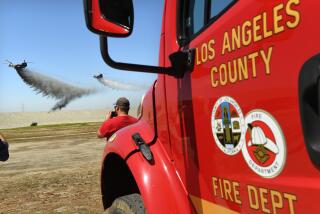Newton: L.A.’s neighborhood councils
When neighborhood councils emerged from the Los Angeles charter reform movement in the late 1990s, they were the subject of that effort’s greatest hopes and most serious anxieties. Supporters viewed them as a vehicle to engage participation in government and to make government more effective and representative. Critics worried that the councils would become obstacles to efficiency and growth, prone to NIMBYism and interposing yet another barrier in a system already better at saying no than yes.
It’s been 10 years since the first of the councils rolled out, and they have yet to prove either as revolutionary as their backers hoped or as obstructionist as their opponents feared. And yet, as councils across the city prepare for a new round of elections this summer and fall, they are growing in strength, forming connections to one another and, gradually, becoming an indispensable aspect of Los Angeles politics.
BongHwan Kim is the general manager of the city’s Department of Neighborhood Empowerment, the entity created to encourage the work of neighborhood councils. He’s had to fight off budget cuts and even attempts to eliminate his department outright.
In a recent interview, he acknowledged it hasn’t always been easy, but he points with pride to the fact that the department at last has offices in City Hall — he and 19 members of the department share a modest space with great views on the 20th floor — and that, as of this moment, 95 neighborhood councils are at work in Los Angeles (the department has a budget of about $2 million a year). That’s a vast network of participation, and though some are best known for long meetings and petty bickering, others are testing their political strength and wading in on issues of consequence.
Today, for instance, the city employs a ratepayer advocate to examine the Department of Water and Power’s rates and report to the public. That job was slow getting filled and funded — blame the City Council for that — but it exists in large part because neighborhood councils rebelled at a rate increase. Councils in the West Valley have helped shape planned developments for that part of the city, and in the northeast, they have tangled with the operator of a landfill — “grandmothers meeting with waste management officials,” Kim observes with a chuckle. And councils across the city have weighed in on zoning changes, advocated for bike lanes and created small parks and other civic improvements. They haven’t overturned the city power structure, but they are making change.
They’ve also fought for their own survival. When, a few years ago, city officials contemplated making ends meet by abolishing the Department of Neighborhood Empowerment, council members descended on City Hall. The council backed down. “Democracy is not always a peaceful and pretty picture,” said Stephen Box, a veteran of neighborhood councils who now works as the department’s elections coordinator.
Erwin Chemerinsky chaired the elected charter reform commission whose members were the most ardent advocates of neighborhood councils. As he puts it, “There was no issue that our commission took more time on than neighborhood councils, and there was no more difficult issue for our commission.” Initially, some, including Chemerinsky, wanted the commissions to be formally elected bodies with concrete duties — supervising land-use, for instance. There were both practical and political reasons why that idea was discarded: Such bodies would only have permitted participation by residents. Business owners and others who play a vital role in today’s councils would not have been allowed to sit on the boards. Meanwhile, the business community strongly opposed councils with land-use authority, which they feared would bring development to a halt.
Chemerinsky and others eventually came around, opting instead for councils that had advisory but not formal authority. The risk was that the public would see them as toothless and that they would never attain their full potential.
Ten years later, that potential still is unmet, but one measure of the councils’ growing stature is their increasing role in city politics. The last three City Council members elected in Los Angeles all drew on neighborhood council support to one degree or another, and no member of today’s council would casually refuse an invitation to speak to a neighborhood council in his or her district.
One sign that the councils will have achieved a permanent place in the city’s power structure will be when a majority of council members owe some political allegiance to the community groups. And that too is a work in progress. After running the Department of Neighborhood Empowerment for the last five years, Kim recently announced that he’s running for City Council. His goal: “to create a district that has the most public participation in the city.”
Jim Newton’s column appears Mondays. His latest book is “Eisenhower: The White House Years.” Reach him at jim.newton@latimes.com or follow him on Twitter: @newton_jim.
More to Read
Sign up for Essential California
The most important California stories and recommendations in your inbox every morning.
You may occasionally receive promotional content from the Los Angeles Times.











